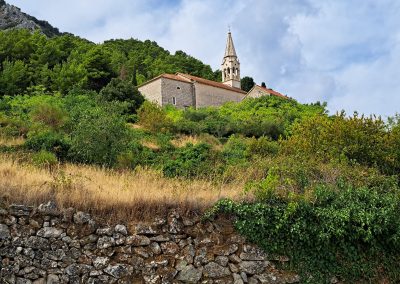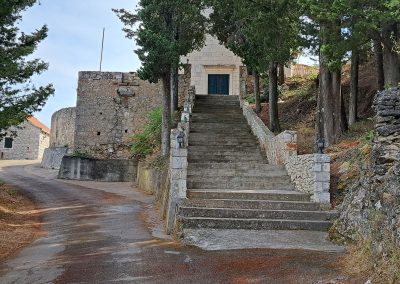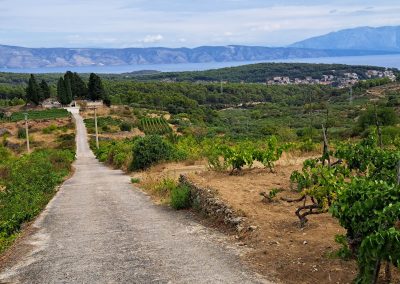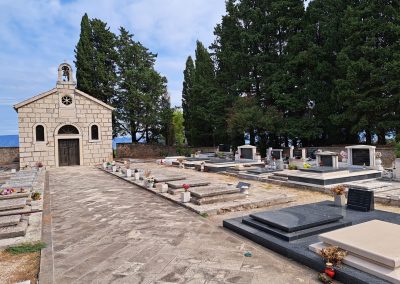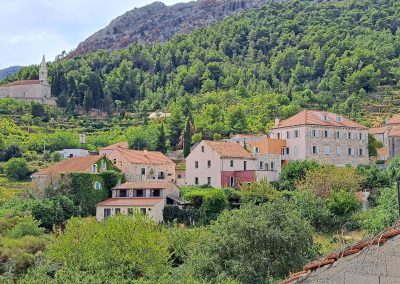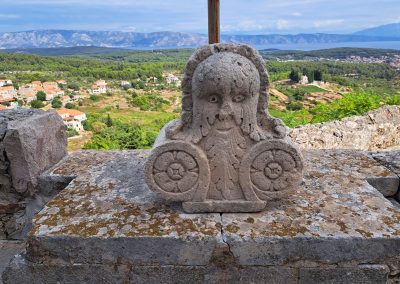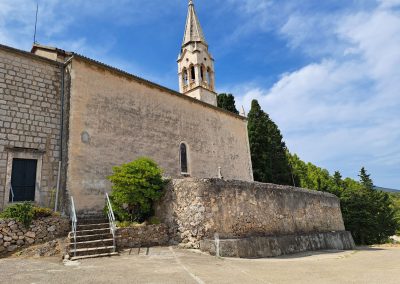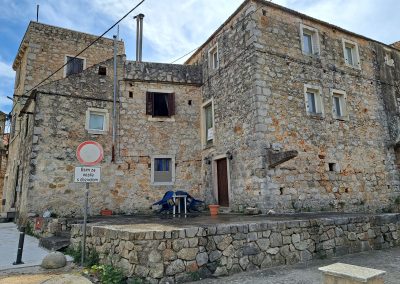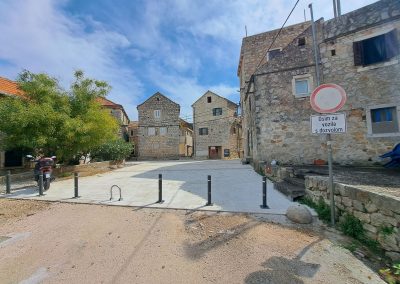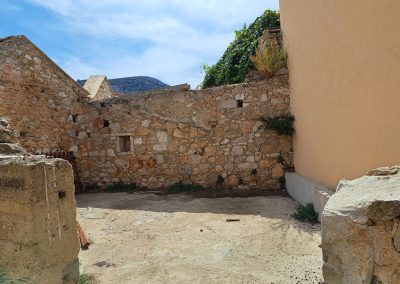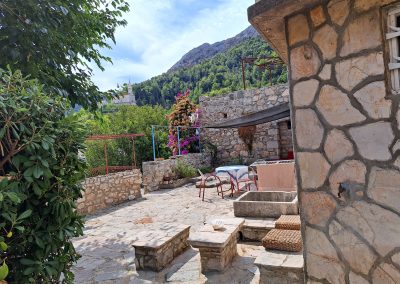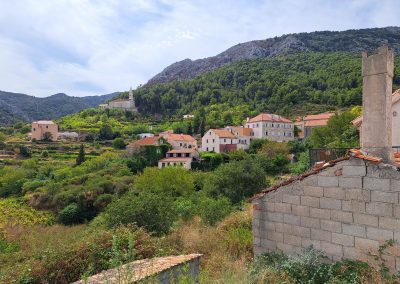Pitve, island of Hvar
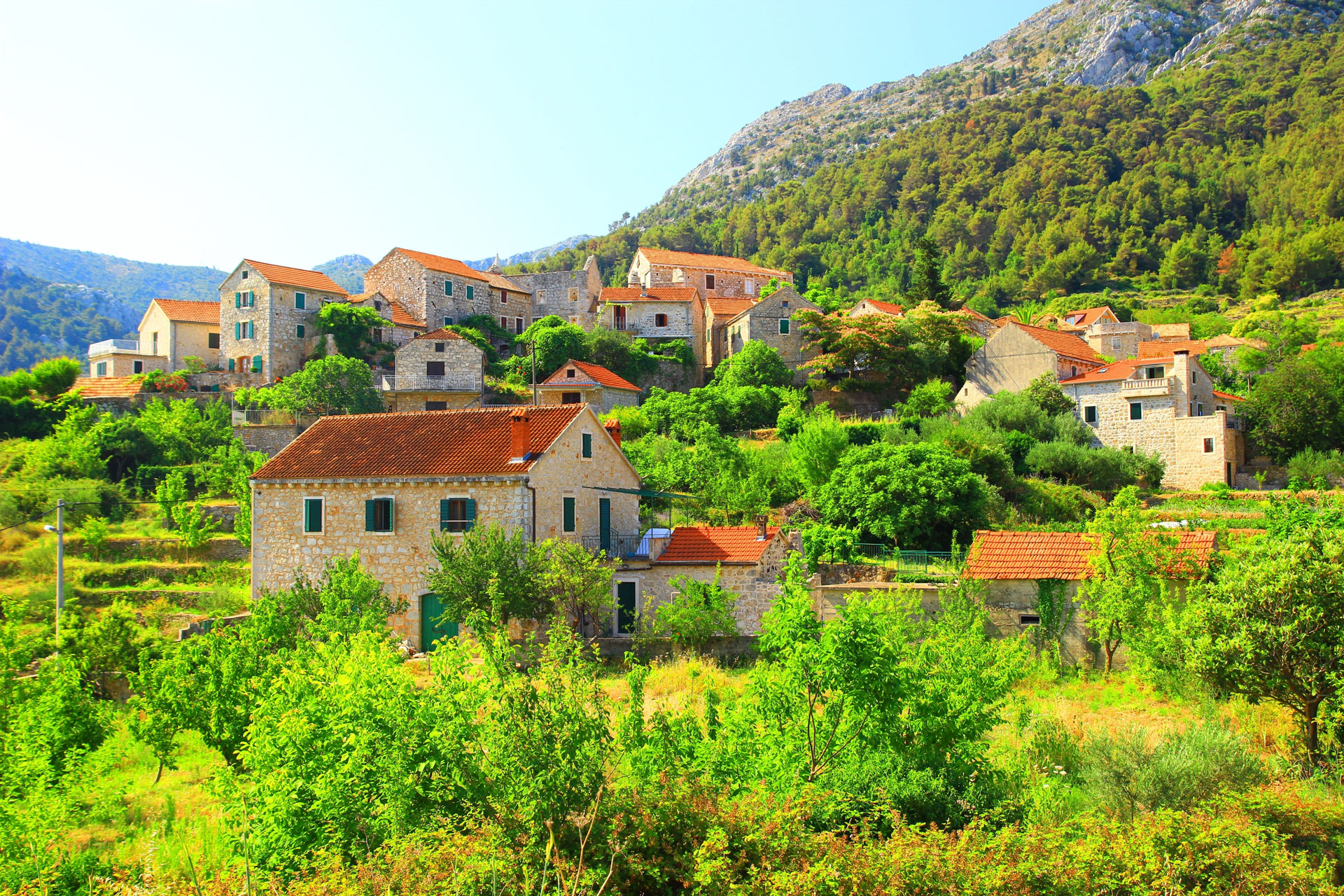
Pitve
The Illyrian name for the island of Pharos (Hvar) is Piteja. The cautious inhabitants of Pitve built their town in a winding mountainous area, high above and 6 kilometers away from the sea. In the past, it was considered madness to build a settlement on the coast as it never “experienced” becoming a town. On the island, dangers come from the sea, one shore of the concept of infinity, so now you see, or rather, you fear. Up on the cliffs, though hidden from view, the invisible protectors—the stone foundations of courage—were welcomed. In this sense, a stone statue of the Roman god Janus was brought to Pitve from somewhere. The embodiment of the ultimate invisible protector, the powerful image of Janus is as present as life itself in a person. Imagination here is not needed; it is necessary. An imagination that does not stop, an unobserved desire to steer through time and changes.
Supported and approved by the invisible protector, in the 13th century, the people of Pitve came to the coast and built a port an hour’s walk from the sea, around which the ten times larger settlement of Jelsa would emerge (according to the people of Pitve). In the 15th century, the Church of St. James was built, marking a significant civilizational achievement. Its integration into the space, at the junction of Lower and Upper Pitve, in a prominent place, satisfies a natural relationship to beauty adorned with a sense of elevation in every sense and aspect. It suggests the definitive completeness of the world, in terms of meaning, creating many benefits.
In the 19th century, a new church was built on the same site on old foundations, surrounded by an ancient cemetery, at the entrance of which stands the “two-faced Janus,” the god of beginnings and initiatives. On the sea route to Pitve, you will encounter their “Great Pine,” a welcome sign that you are on your way to a place from which Pitve can be seen. A forewarned traveler is worth double, and if they look closely, they will discover Pitve in the distance, hidden at first glance. The builders of the settlement relied on this concealment. When you finally reach Pitve, surrounded by a crescent of cliffs, you will be amazed to see a wide road continuing towards that stone wall.
MYSTERY! After a hundred meters, you find yourself in front of a natural stone wall, but you see an opening, not a cave, but a tunnel. The kilometer and a half long tunnel through the mountain connects Pitve, which has about a hundred inhabitants, with Zavala on the southern coast of Hvar Island, which has about 150 inhabitants. … The altitude is 168 meters. The municipality of Jelsa is 3.5 km away from the largest town of Jelsa.
